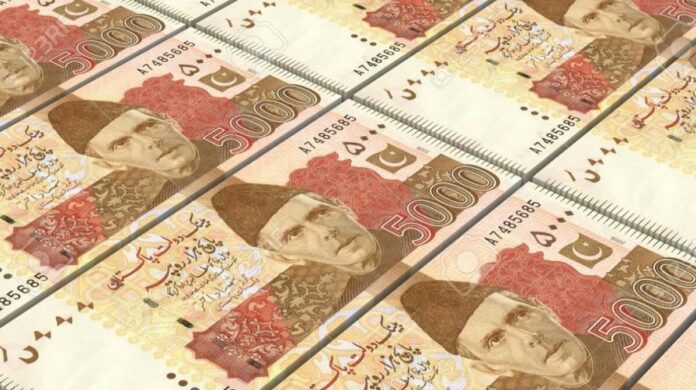KARACHI: The State Bank of Pakistan (SBP) is poised to achieve a staggering feat in the fiscal year 2023, as it is set to generate a monumental profit exceeding Rs 1 trillion, which will contribute substantially to the revenues of the Government of Pakistan. This remarkable figure, as disclosed in the recently presented budget, represents only 80% of the SBP’s overall profit, as the institution retains the remaining 20% for its own operations.
Fahad Rauf, Head of Research at Ismail Iqbal Securities (Pvt.) Limited told Profit that the budgeted profit accounts for only 80% of the total profit. “The budgeted number is just payout not complete profit. After SBP Act only 80% of profit will be paid to the federal government. So this amount of Rs 1.1 trillion is 80% of the SBP profit, not the full amount. SBP holds 20% of its profits as reserves”.
To comprehend the magnitude of this achievement, let us consider some context within the realm of commercial banking. Meezan Bank, recognized as the largest Islamic bank, attained the highest profit among its counterparts, accumulating approximately Rs 45 billion throughout the calendar year of 2022. In a similar vein, Habib Bank Limited (HBL), renowned for its expansive network, reported a profit of Rs 35.5 billion. Consequently, the SBP’s projected profit is expected to exceed the earnings of the most profitable bank in the industry by an astonishing 30 times!
Analysts are optimistic about achieving the revenue target. Amreen Soorani, Head of Research at JS Global Capital Ltd stated in her dissecting the tall revenue targets of FY24 report “SBP Profits at Rs1.1trn – achievable with the outstanding Repurchase borrowing levels with prevailing high-interest rates.”
Now, the question arises: How will the State Bank of Pakistan accomplish such a momentous profit? Analysts have informed Profit that there are two primary avenues through which the SBP can generate this substantial revenue: Pakistan Investment Bonds (PIBs) and Open Market Operations.
- PIBs:
Pakistan Investment Bonds (PIBs) are debt securities issued by the State Bank of Pakistan. These bonds are issued in denominations of multiples of Rs 100,000/- and available in tenors of 3, 5, 10, and 20 years. The coupon rate or semi-annual return on these bonds is paid until maturity. Due to the guarantee provided by the Government of Pakistan, the chances of default or inefficient payouts from these bonds are minimal.
“On the asset side of the SBP’s balance sheet, there is approximately Rs 6 trillion worth of PIBs”, Yousuf Farooq, ex-Director of Research at Topline Securities and independent analyst told Profit. “My understanding is that these are floating PIBs” he added.
- Open Market Operations (Repurchase Borrowing):
Another avenue for generating revenue is through Open Market Operations (OMOs). Simply put, SBP lends money to banks which subsequently invest it in government securities. The SBP earns interest on the money it lends, while banks keep a spread on it and lend it to the government. For example, SBP lends money to bank at the interest rate of 21%. The banks then lends this money to the government at 21.5% or 22%, which means that banks keep a margin of 0.5% or 1%.
Analysts told Profit that at the end of last year, outstanding amount of open market operations stood at Rs 4 trillion. This amount has doubled and now stands at Rs 8 trillion. “And if you notice what has been happening with OMOs is that outstanding amount has been increasing. So by the end of this year it might average to Rs 10 trillion. The SBP makes 21% on this amount which means that the SBP might be able to make revenue of around Rs 2 trillion on OMOs”, Farooq explains.
High profit equation
“The SBP hold PIBs of Rs 6 trillion right now. And so far as it has lent 8-9 trillion through OMO. So if you take an average rate of 15%, it will give you a return of more than Rs 1.5 trillion on that. And obviously the SBP keeps some profit for itself because of the SBP Amendment Act. It (SBP) keeps 20% with itself. So this figure represents 80% of the profit,” Rauf elaborated.
“The SBP’s profit can exceed Rs 2 trillion as well. The only risk to this number is if currency devaluate substantially. If there is no major devaluation, than this number can go beyond Rs 2 trillion as well”. Farooq told Profit.
Analysts firmly believe that the budgeted profit of Rs 1.1 trillion is actually from FY23 profits. “Initially the government used to receive profits from the SBP after every quarter but the new SBP Act that came in early 2022 has changed that. Now the government receives profits from SBP after a full fiscal year following an audit. Fiscal year of the SBP ends in June. And within 4 months SBP has to turn in its accounts. After 30 days of turning in their financial statements, dividends are paid,” Farooq told Profit. By this logic, FY23’s profits are paid in in FY24 and FY24’s profit will be paid out in FY25.
























